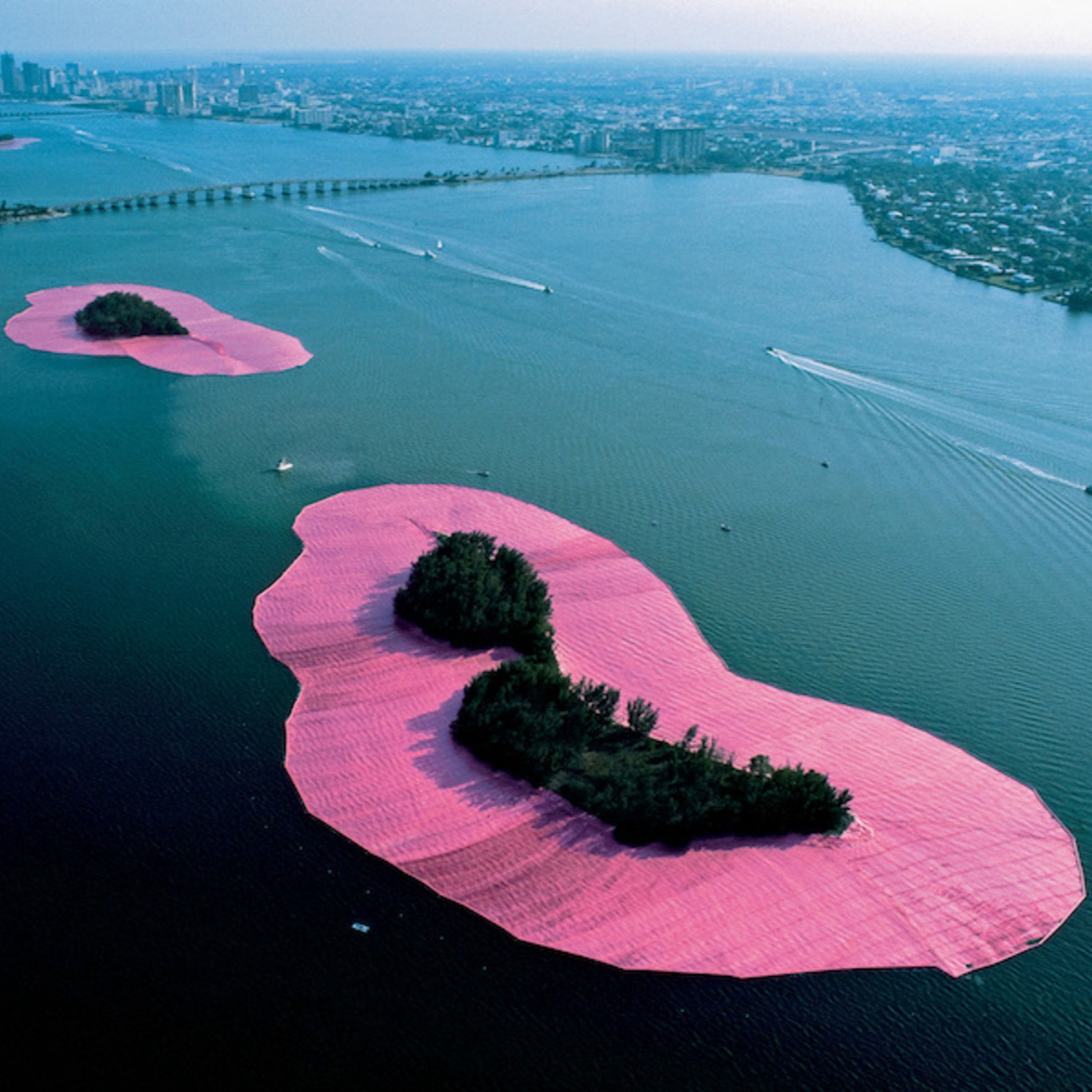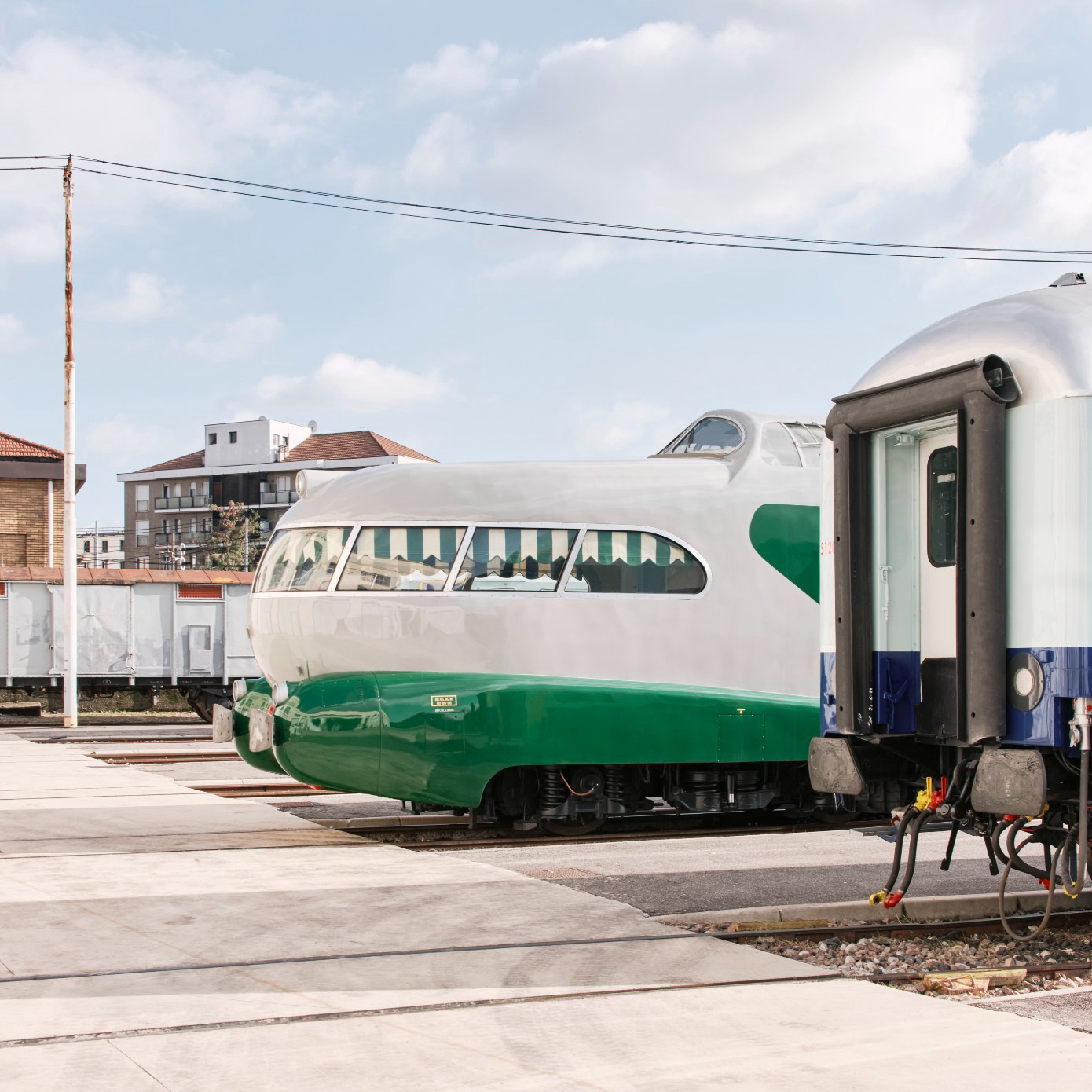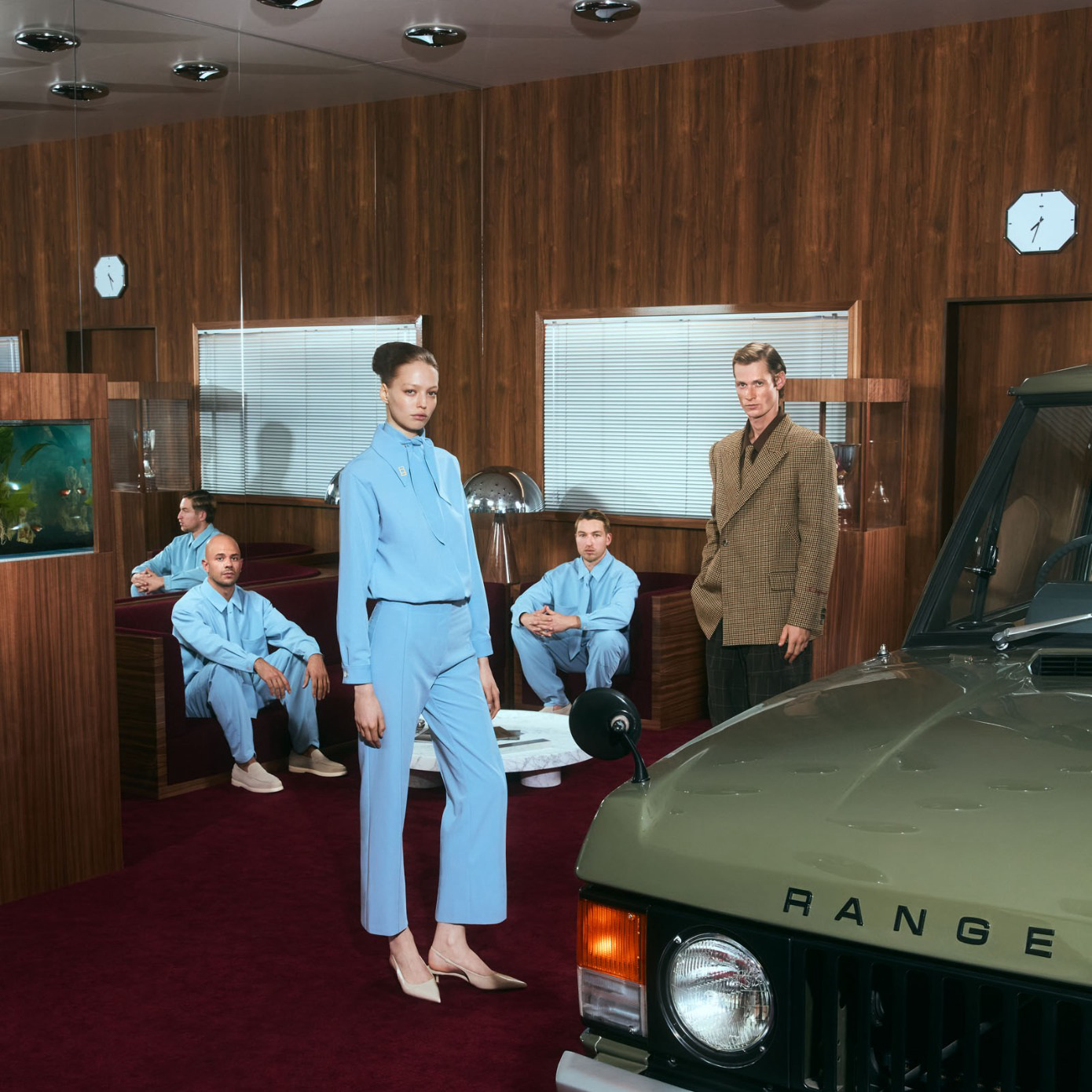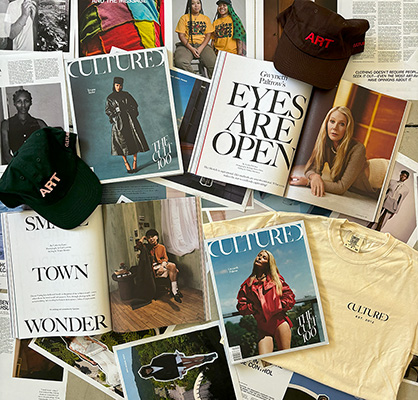
David Hammons is one of the most elusive artists of his generation. Yet somehow, he is also one of the most influential. The 81-year-old is not represented by a gallery and rarely gives interviews. As often as he creates sculptures or prints that end up in museums, he makes fleeting performances in the street that passersby may not even recognize as art.
On Feb. 18, Hauser & Wirth will restage one of Hammons’s most legendary works for the first time since its debut in 2002. Like Hammons himself, Concerto in Black & Blue is the stuff of legend. It comprises an empty, cavernous space that visitors are invited to explore in the dark with blue-light flashlights. “You went into the show looking for the art, but you came out having been the art,” the artist Glenn Ligon wrote of the work in Artforum.
The restaged installation will open at Hauser & Wirth’s Los Angeles gallery just in time for Frieze and will remain on view through June 1. As is typical for Hammons, the show was announced without a press release or formal description. (The gallery does not represent Hammons, but it did stage his most recent major exhibition in 2019.)
Ahead of the opening, CULTURED asked seven artists to share one formative work by, or encounter with, Hammons. Their selections range from the monumental (Day’s End, a “ghost pier” commissioned by the Whitney Museum of Art and unveiled on the banks of the Hudson River in 2021) to the near-missable (an unmarked work in a tribute exhibition to a late art dealer).
Other well-known works also make appearances. There’s Bliz-aard Ball Sale, a performance from 1983 in which Hammons peddled snowballs next to other street vendors, and Pissed Off, for which Hammons urinated on a large steel sculpture by Richard Serra and tossed numerous pairs of sneakers over the top. And, fittingly, for an artist as slippery as Hammons, some of the most memorable encounters described aren’t with his artworks at all.
Together, the responses paint a picture of Hammons’s wide-ranging influence—and the way both small and large gestures can ripple into the hearts and minds of future generations.

Andrew Roberts on Day’s End, 2021
Andrew Roberts (b. 1995) is a Tijuana-born artist who has built his practice across gameplay, roleplay, and worldbuilding, creating multi-platform narratives that materialize through digital animations, objects, and poetry. He is currently working on two museum solo shows, to open simultaneously in Mexico and the United States in 2025.
"I woke up around 5 a.m., unable to fall back asleep. I peered through the window of my hotel, which looked directly out onto the Hudson River. From a distance, drawn thinly against the blue backdrop of a cold morning, it resembled the skeletal shadow of a ghostly entity. I stared at it for a few minutes before returning to bed. Months later, I returned to New York, and now, in the warmth of summer, I embraced its form. It was David Hammons's Day's End.
I couldn’t help but draw a parallel between this monument that jutted into the river and another, more familiar one, thousands of miles away. In Tijuana, where I was born and raised, another metal giant loomed over the sea: the border wall between Mexico and the United States. I contemplated both structures and how the artwork before me evoked the presence of Gordon Matta-Clark, the piers, and their queer history, establishing a relationship of spectral community across the decades, while the other violently divided the land. For a moment, it felt like cruising between ghosts."
Sable Elyse Smith on a conversation about Hammons
Sable Elyse Smith (b. 1986) is an interdisciplinary artist who uses video, sculpture, photography, text, and sound to confront the mundane and pervasive impacts of systemic oppression. Last year, the Museum of Modern Art in New York premiered her new opera, If you unfolded us, created in collaboration with David Dominique and Freddie June.
“I wouldn’t say there is one work that attracted me but rather a material dexterity. A not giving a f--- about an obvious aesthetic beauty or visual pleasure. At times a linguistic pun in the works. It’s a kind of action that attracts me to any work and that has intrigued me.
I had a great convo about Hammons's work with an artist of his generation in my studio probably now six or seven years ago, much of which I’ll keep private except for a refrain that keeps coming up: it seems to me that Hammons’s work is an action of (because I don’t want to say about, about would be wrong) coming into contact with something. The work is not meant to sit; or be ogled, or consumed (and there are many ways that he attempts to upend that consumption, and then of course that consumption catches up to you). The work is propulsive. It’s meant to collide, to be sandpaper, to be and mark a moment of impact. I like that. I like images with verbs.”

Richard Tuttle on Bliz-aard Ball Sale, 1983
Richard Tuttle (b. 1941) engages aspects of painting, drawing, sculpture, bookmaking, printmaking, and installation. He lives and works in Mexico and New York. In response to our query, he submitted a poem.
“the snowballs for
sale: perfect poetry
in the middle of snow
no one to make them
no one to throw them
the situation as art
can be imagination's
daughter-- a perfect
construction out of
nothing for nothing
white as the snow
money as the author”

Glenn Ligon on Hammons’s contribution to A Tribute to Jack Tilton, 2018
Glenn Ligon (b. 1960) is a New York-based artist whose paintings, neons, videos, and works on paper explore American history, literature, and society. He is currently the subject of a two-person exhibition, with the late composer Julius Eastman, at 52 Walker in New York.
"There was a tribute exhibition in 2018 in honor of Jack Tilton, a legendary dealer in New York who gave many artists (including me) their first shows. The exhibition was at Tilton gallery, a grand townhouse space on the Upper East Side of Manhattan, and featured artists such as Xu Bing, Ed Clark, Marlene Dumas, Nicole Eisenman, Douglas Gordon, David Hammons, Lyle Ashton Harris, Kiki Smith, and Carrie Mae Weems.
Connie, Jack’s wife, kept the gallery open after his death and was sitting at the front desk when I came. After I finished walking through the exhibition, which was spread out over several floors, I realized I had missed David Hammons’s piece. Connie, slightly bemused, said it wasn’t on the exhibition checklist, but it was in the top floor gallery space, a large room with plaster moldings and high ceilings. I walked back upstairs to the room she indicated but didn’t see the piece until I Iooked up toward the ceiling, where a lone white helium balloon was floating.
That was the Hammons: a balloon hovering like a spirit over the entire show, a homage to a dear friend who had died too soon. Also, Jack Tilton, a New Englander who seemed like his family had come over on the Mayflower, was one of the whitest men I had ever known but he had been a steadfast champion of the work of artists of color and women. A white balloon was a perfect tribute to him. I would think about Hammons's piece for months after I saw it. As David once said, the less you do, the more of an artist you are."

David L. Johnson on Pissed Off, 1981
David L. Johnson (b. 1993) makes art attuned to the streets of the city, pinpointing moments of slippage between public and private property. His practice utilizes photography, video, found and stolen objects, and installation to examine contemporary urban space. He has forthcoming solo exhibitions at Theta in New York and Fanta-MLN in Milan in 2025.
"I first became aware of Pissed Off at Exit Art’s closing exhibition, 'Every Exit is an Entrance,' in 2012. The show surveyed the alternative art space’s 30-year history in New York. Thinking back, I can’t recall if Dawoud Bey’s photographs of David Hammons urinating on Richard Serra’s T.W.U. sculpture were included in the vitrine of 'Illegal America,' the exhibition that first displayed the work during its second iteration in 1990. However, I remember leaving the show with a vivid description of Hammons’s gesture in my mind.
At the time, I was a teenager just beginning to make work on the street, mostly in reaction to the heightened policing in Lower Manhattan following Occupy Wall Street. Pissed Off was one of the first artworks I encountered that directly engaged with the spatial politics I was seeing and experiencing in my everyday life. The work’s ability to reorient the pedestrian scale against the city’s own monumentality felt deeply affirming. As New York continues to develop new ways of criminalizing public life and restricting access to basic needs, Pissed Off has remained a signpost for me, underscoring art’s capacity to intervene."
Tony Cokes on Hammons’s Interview With Kellie Jones, 1988
Tony Cokes (b. 1956) creates video essays that sample and remix fragments of our media landscape to subvert and disorient. He lives and works in Providence, Rhode Island, where he serves as Professor in the Department of Modern Culture and Media at Brown University. He once incorporated excerpts from a David Hammons interview into his work.
“I can’t stand art actually. I’ve never, ever liked art, ever. I never took it in school… When I was in California, artists would work for years and never have a show. So showing has never been that important to me…” – David Hammons
"While I can think of multiple works by David Hammons that have impacted my practice, it’s actually an interview that Hammons gave to Prof. Kellie Jones in the 1980s that has continued to reverberate with me over the intervening years. I love memorable aphorisms and they often figure in my text-saturated video, light boxes, and print works. In this interview, Hammons delivers a brilliant set of ideas about art-making, institutions, and audiences white and Black. I couldn’t help returning to his statements, especially during the years when I felt more outside the art world than within it. The sheer willfulness of Hammons’s observations inspired me to keep focus on my own creative concepts, desires, and values. And, of course, to redeploy some quotations from his interview with Jones in a work."

American Artist on Concerto in Black & Blue, 2002
American Artist (b. 1989) is an interdisciplinary artist whose work considers Black labor and visibility, as well as anti-Blackness within networked life and digital systems. Their work includes video, installation, new media, and writing. They legally changed their name to American Artist in 2013. They are the subject of a solo exhibition at Pioneer Works in New York through April 13.
"I’ve never seen Concerto in Black & Blue, except in my dreams. John Berger conveyed the way in which the reproduction of an image is how the majority of people experience artworks that are ultimately very meaningful to them. I’ve never seen the Mona Lisa, either. Contemporary art and conceptual art thrives on the transmission of an affect that is abstract. Tom Finkelpearl once told a story of being called down to the 14th Street subway station to see an installation of trash cans by Hammons. Hammons is a disruptor, a storyteller, and story generator. I don’t know how often he leaves his home or studio, but I seem to encounter him everyday."




